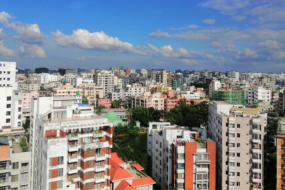Pradeep Mishra, Founder, Homents Pvt Ltd
The term “Lal Dora” has no connection to a red system or any significance related to the colour red. “Lal Dora” is a Persian word meaning “village boundary.” “Lal” represents the village abadi or the most favoured land. Over time, Lal Dora has evolved to assume that all 36 castes in a village reside within its boundaries, ensuring that all interests within this Lal Dora are accounted for by area. Every activity, whether commercial or residential, is recorded. This includes land allocated for animal husbandry, exit routes from villages, ponds for animals, and drinking water sources.
In earlier times, all records were diligently maintained, and Lal Dora land was meticulously demarcated. However, as the population grew and residential land expanded outward, the need for land consolidation and extension of village boundaries beyond Lal Dora arose. This process, known as “Bandobast,” occurred at various times, such as in 1915, 1941, and 1950, when the government extended land boundaries as per the requirements of the village abadi deh.
The legal framework for land records maintenance can be traced back to the Punjab Land Revenue Act of 1887. This act laid the foundation for the creation and upkeep of annual land records and records-of-rights across India.In 1879, during British rule, land calculations were revisited and measured using the unit “Bigha Biswa.” The consolidation of small and fragmented land parcels became essential, leading to a process known as “resettlement” or “Bandobast” carried out across India. During this period, land boundaries were recalculated, and single khasra numbers were allocated to village abadi deh.In 1933, discussions began to re-measure land, now in a 90-degree farming land format, as Bigha dimensions were not in a rectangle position. One acre consisted of 8 Kanal, and 1 Kanal equated to 605 square yards. A rectangular block typically contained 25 acres. Stone demarcation was introduced during this era.The year 1948 saw the passing of the Act for measuring and creating 25-acre blocks, with implementation and record preparation commencing around 1950. The process, known as “Chakbandi,” “Consolidation,” or “Bandobasti,” was consistently applied in various villages.
The concept of “Lal Dora” received official recognition in 1879, but it was properly implemented and recorded after 1950, with periodic updates and changes made as required by the government. The government even allowed for the extension of Lal Dora boundaries upon request by the villagers, adapting to changing needs over time.
As per the current scenario, the inhabited area of a village, known as Abadi Deh, within the Lal Dora boundary, remains without recorded rights for landowners and property proprietors. Records have not been prepared, and boundaries have not been marked through mapping and surveying. The right holders enjoy the use and occupation of their land or property during their lifetime, passing on the title to descendants upon their demise. However, these well-established interests, titles, and proprietary rights have not been officially recorded, causing difficulties in identifying rights and administering the village effectively.
The primary aim and objective of addressing this situation is to identify and prepare records and rights of the proprietors within the Abadi Deh. This process aims to effectively ascertain the rightful owners and landholders. It involves demarcating land within the Abadi Deh and delineating boundaries, ensuring efficient and effective village administration. It also paves the way for upgraded civic services and enhances land value by improving layouts and resolving boundary disputes. These rights can then be freely conveyed, facilitating the village’s development in an efficient and effective manner.
The applicability of the Punjab Land Revenue Act of 1887 is crucial in this process, as it provides the legal framework for preparing records of rights on land falling within the Lal Dora of a village, specifically in the inhabited site of the village. The state government has the authority to impose cess in the village for market or fair purposes. This preparation of records of rights is primarily for villages beyond the limits of municipalities or notified areas.
The record of rights for an estate includes several documents, such as a statement showing landowners, tenants, or assignees of land within Abadi Deh, along with the nature and extent of their interests, conditions, and liabilities. It also encompasses rent, rates, cess, or other payments due from and to each individual, as well as a map of the estate and any other documents prescribed by the Financial Commissioner with the previous sanction of the state government. The timely maintenance of Lal Dora land records, ultimately benefits the residents of the Abadi Deh area within Lal Dora boundaries.



